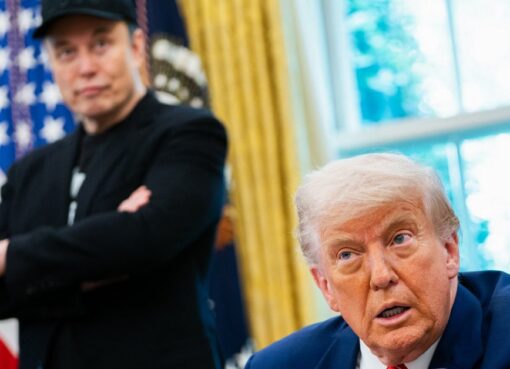On August 15, the San Francisco-based digital currency exchange Coinbase announced that it had acquired the cryptocurrency custody service Xapo’s institutional branch. The business move puts Coinbase in the limelight, making it the largest custodial service for digital assets worldwide, with more than $7 billion under custody.
Also Read: Hong Kong Protest Leader Hopes to Incite Run on Chinese Banks
Coinbase Acquires Xapo’s Institutional Arm and Now Commands $7 Billion Worth of Digital Assets
As early as 2010, Bitcoin supporters such as Hal Finney predicted that someday most BTC transactions would occur between massive bitcoin-backed banks. Finney believed that if a digital currency like bitcoin was to gain mass adoption, the network would not be able to include every single financial transaction in the world. The renowned cryptographer said that large bitcoin-backed banks would fill the void and “work like banks did before the nationalization of currency.” Fast forward to today, where firms like Coinbase are holding massive amounts of digital assets in custody. On Thursday, the California exchange announced that it had acquired Xapo’s institutional crypto operation and established itself as one of the largest crypto custodians worldwide. Coinbase published a blog post in regard to the acquisition and stated:
In just over one year since launch, Coinbase Custody has grown to over $7 billion in Assets Under Custody (AUC) stored on behalf of more than 120 clients in 14 different countries, making it the largest, most globally recognized and most trusted institutional custodian in the world.
Coinbase Growth Since 2012: $8 Billion Valuation, $600 Million in Annual Revenue
Coinbase has come a long way since Brian Armstrong and Fred Ehrsam started the company back in 2012. That year Coinbase allowed users to buy and sell BTC using a bank transfer and quickly became one of the biggest BTC providers next to Mt. Gox. Throughout 2012 and 2013, investors and venture capitalists started seeing potential in Armstrong and Ehrsam’s company and began to invest. The founders participated in a Y Combinator startup incubator, received $5 million from Fred Wilson in May 2013, and $25 million from Andreessen Horowitz, Union Square Ventures (USV), and Ribbit Capital in December 2013. By 2014, Coinbase users grew to more than one million accounts and the assets under the company’s control continued to grow exponentially from there. The cryptocurrency community really took notice of how large Coinbase had grown two years later, when in February 2016, Brian Armstrong told the public that “[Coinbase is] now storing about 10% of all bitcoin in circulation.”

Coinbase is now valued at over $8 billion, after closing a funding round in 2018 for $300 million to “accelerate the adoption of cryptocurrencies and digital assets.” In 2019, despite stiff competition, the San Francisco tech company has estimated revenue between $569-650 million. Binance comes close to Coinbase, with The Block reporting in February that the exchange pulled in $446 million in profits. Kraken captures $150 million annually, Bitstamp $17M, Bitfinex $10M, and Itbit $4M in revenue. Coinbase has around 800 employees and the firm has made roughly 10 acquisitions since 2012. The company acquired startups like Blockr, Earn.com, Cipher, Digital Wealth, Keystone Capital, Blockspring, and now Xapo’s institutional arm. Coinbase has also made various equity investments like the recent cryptocurrency derivatives exchange Blade as well as acquiring Horizon Games, Textile, Near, and Dharma.
In 2017 Speculators Estimated Xapo Held $10 Billion Worth of Bitcoin With Keys Spread Across 5 Continents and a Swiss Military Bunker
Xapo started its business similarly to Coinbase, but did not offer its bitcoin wallet and cold storage vault services until March 2014. The Hong Kong-based company was founded by Wences Casares and Federico Murrone and quickly became a well-known crypto brand. In 2015, the company moved its headquarters to Zug and two years later the firm was granted a European e-money license in Gibraltar. That year, during the all-time highs of 2017, it was estimated that Xapo’s Swiss bitcoin vaults held billions of dollars’ worth of digital assets. Quartz columnist Joon Ian Wong reported on Xapo’s vault in Attinghausen, Switzerland when he visited the facility. The security was extreme and resembled a James Bond movie, Wong noted during his visit.
“[Xapo] won’t tell me how much bitcoin is stored in the vault, but he says he sometimes takes customers with “millions” of dollars worth of the cryptocurrency stored with Xapo to tour the vault,” the reporter wrote in October 2017.
Despite the company not disclosing how many coins are held in the Swiss vault, estimates from Bloomberg in the spring of 2018 said Xapo held more than $10 billion. By the summer of 2018, Xapo Inc. received the sixth Bitlicense and was approved to operate in the state of New York as a regulated Bitcoin business.
The @xapo bitcoin vault in a former swiss military bunker 320 m inside a mountain is seriously impressive. Thanks for arranging @tedmrogers. pic.twitter.com/H0n36lZfNX
— Marc van der Chijs (@chijs) October 5, 2017
Over the last two years, Xapo has made around $4.2 million in revenue annually. Additionally, Xapo employs around 52 people and the company has raised a total of $40 million since its inception in 2014. Reports stemming from Xapo’s vault in Switzerland have made speculators believe the company’s institutional vault still has a massive amount of digital wealth under its wing. Moreover, during Wong’s visit to the vault three years ago, Xapo told him the vault operators can never unwind. “This is not a race. It is a chess game. You have to think about the opponent’s next movement. You can never relax,” the Xapo executive detailed.
Sure. Consumers won’t mind bitcoin banks, but that is a huge systemic risk. Say goodbye to all of the core benefits of Bitcoin. Inflation resistance, censorship resistance, Gone.
— Paul Puey (@paullinator) August 16, 2019
Members of the Crypto Community Discuss the Current Custodial Trend
Coinbase and Xapo have scared some cryptocurrency advocates who think that storing a vast array of coins in custodial services might not be a good idea. Digital currency pundit Jill Carlson tweeted: “The Xapo [and] Coinbase collaboration has me asking: ‘What happens if someday one entity just custodies all 21 million bitcoins? Aren’t we just recreating the same, broken financial system?’” Edge Wallet founder Paul Puey responded by saying: “You need more than just the option too. You need a majority of crypto held in noncustodial solutions. Otherwise, we run the risk of losing the ability to transfer funds without a third-party.” Puey continued:
Bitcoin then just becomes an overleveraged asset class like a gold ETF.
Using a cringe-face emoji, Monero developer Riccardo Spagni jokingly wrote: “A few months back a VC told me that ‘custody is the most exciting space in the ecosystem right now.’” The Block writer Frank Chaparro (Fintech Frank) said that no smart asset manager would custody all of their coins with one provider. “There is a need for multiple custodians – we see this even in the so-called broker financial system,” Chaparro insisted. However, Coinshares executive Meltem Demirors revealed that she believes “everyone custodies their coins with one provider.” “Did you know that everyone in the U.S. custodies their share certificates with one entity – the DTCC?” Demirors wrote.

Mega Bitcoin Banks Issuing Their Own Digital Bucks and Verifiable Proof-of-Reserves
The mega crypto bank discussion has many crypto enthusiasts wondering if the massive amount of digital currency custodianship is good for the environment. Coinmetrics executive Nic Carter sarcastically explained that he’s “waiting for a major custodian/exchange to implement proof of reserves” with a picture of a rotting skeleton next to a computer. It’s a stark cry from Hal Finney’s 2010 prediction, when he said that megabanks would be “the ultimate fate of Bitcoin.” “Most Bitcoin transactions will occur between banks, to settle net transfers,” Finney detailed. He also said that these banks would use the BTC to be “high-powered money,” which would serve as a reserve. Then these Bitcoin-backed banks could “issue their own digital cash,” Finney emphasized.
We have seen Hal’s prediction already start to occur within the cryptocurrency industry as large exchanges, which have silently become the largest crypto banks in the world, are starting to mint their own digital assets. Binance has created binancecoin (BNB), which holds the sixth largest crypto valuation out of more than 2,000 digital asset markets. Coinbase and Circle Financial have the Centre foundation, which controls the regulated stablecoin USDC. With a transparent blockchain system, a true “proof-of-reserves” type of scheme could transpire, unless people decide to trust these companies like the financial institutions today. If the community simply trusts these mega crypto banks then unsustainable banking techniques like fractional reserves could proliferate unchecked.
The way things are moving, with the recent Coinbase acquisition of Xapo and digital currency exchange providers becoming far bigger than traditional institutions, it begs the question: are mega bitcoin banks the shape of cryptocurrency custody to come? It may not be the future we chose, but it’s the one that’s fast becoming a reality.
What do you think about the Coinbase acquisition of Xapo? Do you think that custodial services will dominate the crypto industry? Let us know what you think about this subject in the comments section below.
Image credits: Shutterstock, Coinbase, Xapo, Pixabay, Twitter, Centre, Circle, Jamie Redman, and Wiki Commons.
Enjoy the easiest way to buy Bitcoin online with us. Download your free noncustodial Bitcoin wallet and head to our Purchase Bitcoin page where you can buy BCH, BTC, ETH, BNB, and other popular coins securely.







